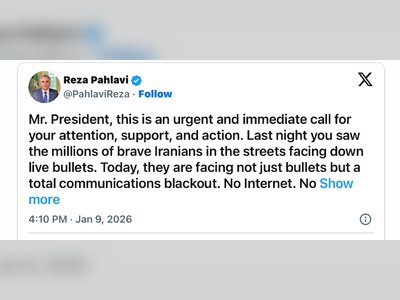
France to invest in drones and space, in €413 billion military budget
A year after the Russian invasion of Ukraine, France's government presented the new Military Programming Budget (LPM) on Tuesday, which shows an increase of €100 billion compared with the previous seven-year budget.
"This LPM is an unprecedented increase in the defence budget," said Sébastien Lecornu, Frances Minister of the Armed Forces, who admitted that certain programmes took priority over others.
The increased spending plans are justified by "the very rapid deterioration of the geopolitical context" marked by the war in Ukraine, but also "the appearance of numerous technological leaps which have a cost," the ministry said.
The aim is to deal with "operational emergencies", particularly in terms of drones and anti-drone warfare, one of the weaknesses of the French military system revealed by the war in Ukraine, but also to cushion the effects of inflation.
And despite a clear increase in resources, not all the planned needs will be met.
"Some equipment may not arrive in as large a number as expected by 2030."
Scorpion programme suffers
The Scorpion programme to renew the army's armoured component with interconnected vehicles will bear the brunt of budget and procurement decisions.

There will be about a hundred fewer Jaguars armoured vehicles in 2030 compared with the 300 initially planned; and the delivery of "a few hundred" Griffon and Seval armoured vehicles will be postponed until after 2030 -- instead the lifecycle of VAB and AMX-10RC vehicles will be extended, of which a few dozen have been promised to Ukraine.
Similarly, the deliveries of 42 Rafale fighter aircraft planned between 2027 and 2030 have been delayed until 2032. In 2030, the Air Force will have 137 Rafales against an initial target of 185.
Meanwhile the French Navy will only be able to count on three of the five defence and intervention frigates it should have in 2030.
Programmes linked to nuclear deterrence or the timetable for delivery of the next generation aircraft carrier in 2038, will be maintained.

In the space sector, which is marked by growing conflict, Paris will finance studies on the next generation of Celeste electromagnetic intelligence satellites and the successor to the Yoda patrol satellite programme, designed to keep curious spacecraft away from French satellites.
The third Syracuse IV communications satellite has been abandoned.
As a result of the lessons learned in Ukraine, Paris also wants to increase its efforts on ammunition and artillery with Caesar guns and the replacement in 2027 of unitary rocket launchers (LRU) by American Himars or a European solution. "This topic is not decided", according to the ministry.
The LPM also provides for the financing of the Future Air Combat System (Scaf) demonstrator and studies on the future Franco-German MGCS tank.











